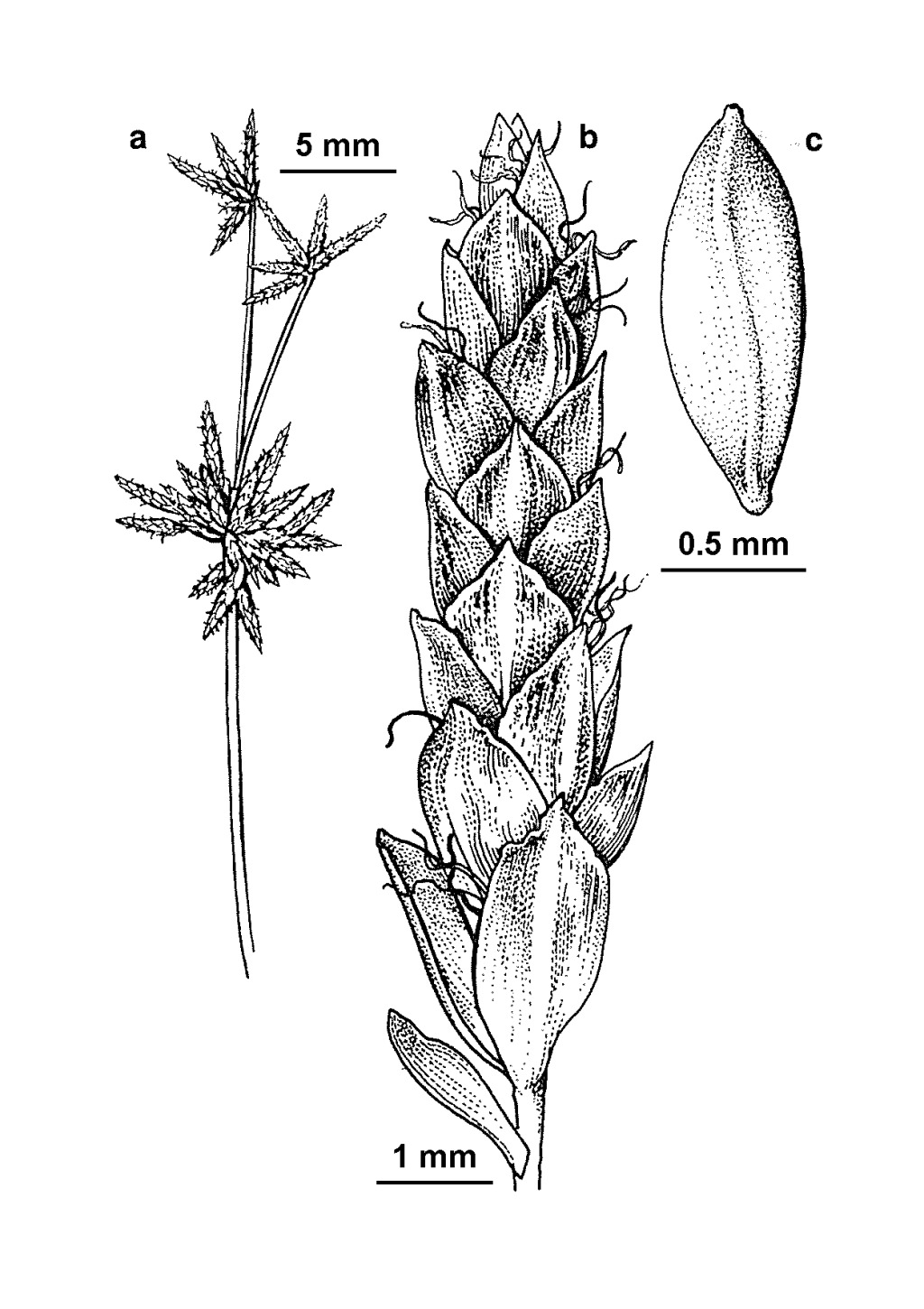Isolepis prolifera
(Rottb.) R.Br.Slender, tufted or stoloniferous, usually proliferating from inflorescence. Culms often decumbent, to 40 cm high, to 3 mm diam. Leaves reduced to dark red-brown sheaths. Inflorescence a ± loose globose head of numerous spikelets, proliferous branches to 12 cm long, spikelets 4–15 mm long; involucral bract shorter than inflorescence; glumes irregularly several-nerved on sides, hyaline or pale brown flecked or tinged dark red-brown, 1.8–2.3 mm long; stamens 3 (rarely fewer); style 3-fid. Nut ± unequally triquetrous, ellipsoid, smooth or minutely pitted, glistening, pale yellow, about half as long as glume, c. 1 mm long, c. 0.4 mm diam. Flowers spring.
VVP, GipP, GGr, DunT, NIS, EGL, Strz, VAlp. Also naturalised in WA, NSW, Tas. Native to southern Africa. Known in Victoria only by a few collections in wet places (Mt William in the Grampians, Clarkefield near Sunbury, Lake Mountain, Inverloch, and Cann River).
Superficially similar to the native Isolepis inundata but generally coarser and commonly with the inflorescence proliferating. It may be better placed in Scirpoides or some other genus.
Wilson, K.L. (1994). Cyperaceae. In: Walsh, N.G.; Entwisle, T.J., Flora of Victoria Vol. 2, Ferns and Allied Plants, Conifers and Monocotyledons, pp. 238–356. Inkata Press, Melbourne.
 Spinning
Spinning


